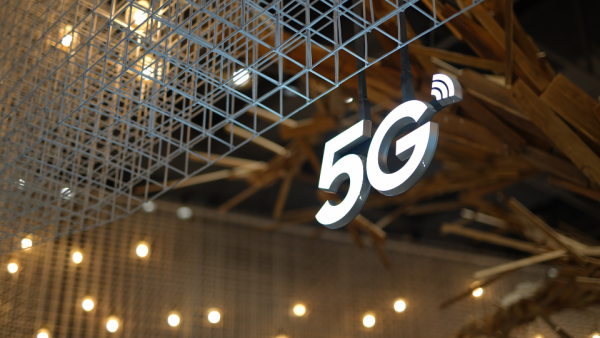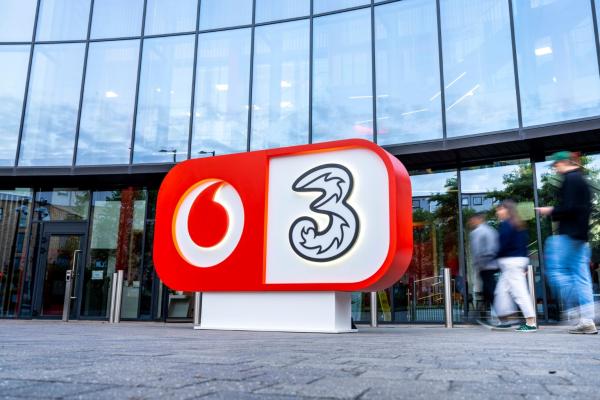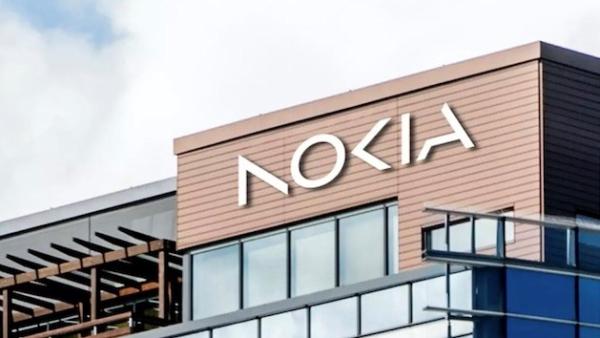Written by Andrew Wooden, Telecoms.com

It’s that time of year again when we ask some leading lights from the industry to gaze into their crystal balls and take a punt on what we’ll be talking about next year in the world of telecoms.
CAPEX will be flat in 2023
"In the wireless market, 2023 is going to require strong financial control by operators as revenue growth is robust but inflationary pressure on operating costs continues to squeeze margins. Carving out operational efficiencies will be the top priority for many. CAPEX will be flat in 2023 and operators should have a clear goal of using CAPEX to drive both revenue-generating business growth and supporting the wind-down of legacy network services.
3G in particular will be under even more intense scrutiny in more mature markets (though still an important mobile broadband platform in some developing regions) with its impact on OPEX significantly out of proportion to its limited share of mobile data traffic. The true economic value of more efficient, newer networks can only be completely realised when legacy networks are retired and there is a meaningful prize for those that can achieve that in 2023."
Phil Kendall, Executive Director – Service Provider Group, Strategy Analytics
Intelligent RAN will provide an ‘all bands’ optimized 5G Network
"Although efforts are underway to sunset 2G and 3G networks, many CSPs will need to operate multiple base station types across 2G, 3G, 4G and 5G for many years. In addition, they will need to accommodate an ever-widening range of spectrum bands – up to 20 bands or even more. Another major issue is the need to reduce OPEX costs, particularly power consumption. Although 5G hardware is more energy efficient than 4G, the total power consumption of 5G networks will be higher as 5G networks will be much denser and will require more base stations.
AI-driven Intelligent RAN technology will be used to efficiently maximise the use and transition of all available spectrum bands – including legacy narrowband FDD bands – to 5G.
As a result, Counterpoint Research believes that Intelligent RAN services will start to become commercially mainstream during 2023 leading to more efficient network management and power consumption savings. In addition, AI-driven Intelligent RAN technology will be used to efficiently maximise the use and transition of all available spectrum bands – including legacy narrowband FDD bands – to 5G."
Gareth Owen, Author at Counterpoint Research
The battle for operators to restore their finances
"2022 has seen initial skirmishes in the battle that mobile operators have embarked upon to restore their finances and deliver a positive return on investment after years of falling share prices. In 2022 we saw calls for the OTT providers to pay a fee for carriage of data related to their apps and also merger talks in a few countries including Canada and the UK.
These developments will crystallise in 2023 as realisation becomes widespread that there are no significant new revenue sources on the horizon. It will be widely accepted that 5G has failed to result in an uplift of ARPU and cellular IoT has been so disappointing that MNOs will exit that space, selling off or shutting down their IoT divisions.
It will be widely accepted that 5G has failed to result in an uplift of ARPU and cellular IoT has been so disappointing that MNOs will exit that space, selling off or shutting down their IoT divisions.
This, in turn, will lead to discussions as to how social objectives such as enhanced coverage and increased reliability can be delivered and while these will be inconclusive they will point towards greater network sharing and single rural networks. OTT providers will successfully prevent any imposition of fees for carriage but will voluntarily reduce the data sent to users through compression, removing auto-run on videos and other traffic reduction measures. A knock-on effect of this will be for mobile data growth to slow further, dropping below 20% in most countries and raising questions as to whether the decade-long data explosion is coming to an end.
None of these will help much with operator finances in 2023 but they will set out a path for reduced investment in subsequent years."
William Webb, CTO, Access Partnership
Telcos will become tech-cos
"We believe 2023 will mark an acceleration in the transformation of telcos to become “tech-cos.” This will be marked by two shifts: first, telcos will need to innovate and provide new services that elevate their relationship with customers beyond a connectivity provider. For example, Swisscom, out of Switzerland, is expanding the value it offers customers by training technical and commercial employees to also advise and consult their customers on their own cloud journey. And Sweden-based Telia, is training and upskilling 10% of its workforce to build and operate cloud-native AI and ML applications.
Second, telcos will need to experiment with running their network as a platform. This will provide a new way to monetise their network build-outs and spin up a new, profitable MVNO within a couple of days with as few as 10,000 subscribers. Although they typically operate using legacy applications, traditional workforce, and longstanding development processes, we are seeing more and more telcos who have a clear vision, and desire, to achieve innovation and improve the customer experience. Telcos that embrace the opportunity for transformation will be better positioned to unlock new growth."
Adolfo Hernandez, Vice President, Global Telco Business Unit at AWS
The ability for operators to dictate policy will be weakened
"2023 is going to be a year of changing emphasis and influence for telecoms regulators and policymakers. The ability of “traditional” telcos, especially mobile operators, to dictate the policy agenda will be significantly weakened, as many other stakeholder groups articulate alternative messages, while public 5G conspicuously fails to live up to the industry’s own hype. Enterprises, municipalities and branches of government like the military want to build their own 5G and fibre networks. Continuous demands for more exclusive mobile spectrum for national MNOs in the run-up to WRC23 will face pressure from advocates of shared/private 5G, local fixed-wireless access, satellite networks, Wi-Fi and others.
The ability of “traditional” telcos, especially mobile operators, to dictate the policy agenda will be significantly weakened, as many other stakeholder groups articulate alternative messages, while public 5G conspicuously fails to live up to the industry’s own hype.
The flawed metrics that many old-school lobbyists (and their tame consultants) use to persuade regulators will crumble under closer scrutiny: outdoor-only coverage percentages, aggregate data traffic volumes, homes passed, “energy per bit” – all of these statistics are “easy” and convenient, but are often used to obfuscate.
Policymakers will raise their eyebrows at spurious claims that are, in reality, just fig-leaves for operators really seeking to maintain oligopolistic incumbency, or put other CSPs and cloud/content companies at a disadvantage. As well as continued (and mostly risible) attempts to force Internet companies to pay for telcos’ infrastructure, we can expect pushback against shared- and unlicensed spectrum, and perhaps demands for “data austerity” based on questionable claims of energy intensity. We can expect the more enlightened regulators to ask for more detail – and seek good metrics, not just easy but flawed headline figures."
Dean Bubley, Director, Disruptive Analysis
A call for evidence around net neutrality
"Following the lead of United Kingdom’s Ofcom which proposes to modernize its rules, European and Latin American telecom regulators will issue a call for evidence on the performance of net neutrality regulation. Invariably they will find that the policy is failing consumers, innovators, and investors. These countries want to move forward with 5G smart networks, but they have policy designed to maintain a dumb pipe. This can’t be resolved, even with the proffered slicing techniques.
More important, consumers are denied their freedom of choice by being forced to value all data uniformly and equally when their preferences show that they place different values on different data. Policymakers will see that they are trading away billions of dollars in network investment for the sake of a “look good, feel good policy” which does not serve consumers, startups, or investors. Simply put, no leading 5G nation has hard net neutrality rules, and yet they protect consumers and the ecosystem with competition law and transparency rules."
John Strand, telecom analyst
5G FWA and private networks will be hot stuff
"The rollout of 5G SA networks will reach an inflection point by end of 2023. In some markets such as USA, India, China and parts of Europe and South Asia we will see more activities from CSPs on leveraging 5G SA network slicing capabilities to promote and deploy private networks. We estimate Mining and Manufacturing will be the top two sectors where Private Networks will pick up in 2023. The business case while promising will still need to be proven and the ROI horizon or immediate benefits will be the key metrics which will decide how these projects scale to similar companies in the same verticals as well as other verticals. China, Australia, USA, Germany, Middle East, and Korea, will lead this trend.
We believe Europe and Asia (India, SEA) will see a strong wave of FWA push in 2023 and the overall 5G FWA subscribers will double globally compared to 2022.
FWA has been the hottest topic and touted to be the killer use-case for 5G. The demand for high-speed broadband is at an all-time-high thanks to the pandemic and all the efforts to bridge the digital divide and limited fibre reach. However, the first phase of FWA deployments between 2020-2022 was marred by supply constraints on CPE side as well as slower deployment of 5G coverage especially with higher capacity and throughput spectrum such as C-band and mmWave.
We believe 2023 we will see greater focus on 5G FWA rollout with aggressive go-to-market activities supplanted by decreasing 5G CPE prices. Middle East countries have led the way with FWA and now followed by USA. We believe Europe and Asia (India, SEA) will see a strong wave of FWA push in 2023 and the overall 5G FWA subscribers will double globally compared to 2022."
Neil Shah, Author at Counterpoint Research
The impact of inflation
"We expect a continued increase in 4G and 5G use, as people across the country make their lives increasingly digital. The onus will be on mobile networks to deliver the network infrastructure capable of supporting a fast and reliable experience.
All industries will continue to feel the impact of inflation and rising energy prices on the cost of doing business in 2023. Regulatory obligations, such as the removal of high-risk vendor equipment, compliance with the UK Telecoms Security Act, and continued Shared Rural Network rollout, will also increase costs. This furthers the argument for consolidation in the market, as scale would prevent MNOs from having to make tough investment decisions and allow them to continue investment on all fronts, generating innovation and growth in the market."
Iain Milligan, Chief Network Officer, Three UK
The industrial metaverse
"Many significant business benefits will come from the industrial metaverse, and Industry 4.0 digitalization will continue setting a path for realizing these advantages in 2023. Enabled by a confluence of network, communication and cloud technologies, the metaverse empowers industries to shift expensive, time-intensive activities into a fully virtual world. We will see activities like prototyping and testing new processes – which are far more flexible and accessible in a digital format – come to the forefront allowing industries to iterate, experiment and validate their operations like never before.
Many significant business benefits will come from the industrial metaverse, and Industry 4.0 digitalization will continue setting a path for realizing these advantages in 2023.
With its use of IoT sensors, artificial intelligence (AI), machine learning (ML), pervasive data and other advanced technologies, the industrial metaverse and Industry 4.0 share the same vision of intelligent, connected and resilient operations.
As a natural extension of Industry 4.0, the metaverse will continue to advance this vision with a virtual first approach. With advanced industrial networks built on fast, flexible 4G/5G private wireless, high-performance IP/MPLS and optical transport, edge computing and more enterprises from manufacturing and logistics, to utilities, transportation, healthcare and more will experience the benefits of digitalization today while preparing to capitalize on the innovations and opportunities presented by the industrial metaverse and the 4th industrial revolution."
Chris Johnson, Global Head of Nokia’s Enterprise business
RIC platforms
"I think 2023 will see the first commercial deals for the service management and orchestration (SMO) systems used in Open RAN networks and the centralized, non-real-time RAN intelligent controller (RIC) that will bring operators greater control over how their networks are configured, optimized and automated. These systems will need to support traditional, “purpose-built” RAN which still will still comprise the majority of new RAN shipments in 2023 and the vast majority of the installed base. As such, support for the OSS interoperability initiative interfaces used in traditional self-organizing networks (SON) will be required. The SMO could form the basis for a next-generation OSS that manages transport and core, as well as the RAN.
The operators that embrace RIC technology fastest should see improvements in operational efficiency and user experience.
As such, the traditional OSS vendors will be gunning for that opportunity. The RIC will see existing SON vendors pivoting to the new paradigm as well as a number of new entrants. The RIC platform with the richest portfolio of applications and a software development kit (SDK) that allows operators to easily create their own use cases, should be the winner. The operators that embrace RIC technology fastest should see improvements in operational efficiency and user experience. More speculative use cases for RIC that could drive new revenue for operators provide the cherry on top of the intelligent control cake."
James Crawshaw, Practice Leader – Service Provider Transformation, Omdia
The death of the SIM card
"The SIM card’s days are numbered, and 2023 will be the year it’s finally replaced for good. SIM cards have been around since the early 1990s, making them practically archaic in the fast-moving world of technology. Better alternatives like the eSIM and iSIM are beginning to gain traction as they mean devices can swap between different networks without the need to physically swap SIM cards.
Apple has made the first move in the consumer space, retiring the SIM card in favour of eSIMs in the new iPhone14 – it’s no doubt that other manufacturers will soon follow suit. In the enterprise world, eSIMs mean connected IoT devices can freely move around the world, including between public and private networks, while staying connected at all times. Beyond this, we will see even further evolution in the way of the iSIM, which is directly embedded in IoT devices’ hardware and will enable even more advanced use cases.
The humble SIM card has had a long and successful career but the age of the eSIM is here and with it – the future, and industry 4.0."
Divya Ghai Wakankar, VP Enterprise Market, BICS
AI and the multi-metaverse
"2023 will see Artificial Intelligence becoming increasingly available to wider number of organisations and their functions, from predictive text suggestions we see in Google Mail to sophisticated chat bots that improve customer engagement.
With initiatives such as the one from the UK Government on the AI regulations, AI will be seen as a powerful ally to solving many challenges, not only for marketing and customer relations purposes, but for talent finding and hiring as well. Moreover, if previously AI was only seen as a way to automate mundane tasks, today companies are exploring creative opportunities of AI in art and even care homes (using AI to recognise the emotions of residents), and that will only continue expanding in the next year and beyond.
With initiatives such as the one from the UK Government on the AI regulations, AI will be seen as a powerful ally to solving many challenges.
The Metaverse is currently seen as a consumer-led proposition that will help people experience games, videos and life on a whole new level, from virtual meetings to creating your own communities. However, we see the real power lie in the Industrial and Enterprise Metaverse. This will allow manufacturing companies to design and build products using AI and VR tools by spinning physical operations in a virtual world – something called digital twins. With investment in the Metaverse set to reach over $824 billion by 2030, businesses will be more actively implementing this infrastructure into their operations, boosting collaboration across borders."
Elena Davidson, CEO, Liberty Comms
The digital divide
"Bridging the digital divide will continue to be a major theme as we head into 2023, and there is still a lot of work to be done. New research from the United Nations has revealed that there are still over 2.9 billion people around the world that are not connected to the internet. As we begin to view the internet as a utility – in the same way we would water, gas, and electricity – it’s time for us to connect the unconnected. This is no small feat, networks are under constant pressure to cope with increasing demand, while evolving alongside new technologies and remaining flexible for further expansion.
Bridging the digital divide will continue to be a major theme as we head into 2023, and there is still a lot of work to be done.
As we look towards 2023, network providers will continue to work closely with government agencies to bridge this divide. We’re already seeing huge funding pots allocated from various governments and agencies around the world. This investment in digital transformation and infrastructure will provide long term and far-reaching benefits for us all – both economically and socially. Although it’s clear that we still have a long way to go when it comes to broadband rollout, the future looks promising. By working together, we can make broadband for everyone a reality."
Michael Wolfe, CTO, Outdoor Wireless Networks
The AirBnB of telecoms
"2023 will be the year that sees the telco industry collaborate more closely than ever with the big cloud platforms. In a symbiotic relationship, cloud platforms including Google, AWS, and Microsoft Azure will provide the all-important cloud infrastructure and platforms, leaving telcos in an interesting position – where will they sit in 2023’s value chain?
As network services continue to evolve and as the blurring of the lines increases between telcos, cloud and internet players, operators will need to rethink what value they bring to end-customers. Indeed, 5G is creating an exciting opportunity for telcos to liberate their own networks and move up their value chain by creating network ecosystems and marketplaces from which services can be easily acquired and bought. Picture the ‘AirbnB of telecoms’, whereby organisations become virtual network operators by helping them procure network services through API-based wholesale virtualized ecosystems, owned by telcos themselves."
Chris Voudouris, CTIO, Neos Networks
Retail will lead the pack in private 5G
"5G private wireless will move beyond industry 4.0 with retail as the next big frontier. The manufacturing, petrol, gas and energy sectors have been successfully deploying private wireless and edge to drive business efficiencies and cost savings. Other industries will soon take note, and 2023 will be the year (5G) private wireless use cases and testing take hold across other industries, with retail leading the pack. From enabling cashier less payment, real-time analytics, personalised promotions, asset tracking and supply chain optimisation, private wireless and edge will be key to unlocking the next generation of the shopping and CX experience.
2023 will be the year (5G) private wireless use cases and testing take hold across other industries, with retail leading the pack.
Traditional late technology adopters will become early adopters of private networks. Other industries positioned to adopt (5G) private wireless and edge include transportation, logistics/industrial, and healthcare. These technologies will enable clinicians to pull a patient’s medical images and test results in real-time, meet HIPPA compliance requirements, and have better management of patient data."
Darren Parkes, Country Practice Leader, Kyndryl
The metaverse will not become mainstream
"Metaverse will not become mainstream next year, but investments will continue despite continued financial woes for the tech industry. The year ahead will primarily focus on standardisation. Ookla plays an active role in defining the network requirements as part of the Metaverse Standards Forum (MSF). We expect new devices to launch in 2023 and beyond at a lower cost than Meta’s Quest Pro, priced at $1,499. Apple is not participating in the MSF as it follows its usual walled-garden approach.
2023 will see more telco players jumping on the metaverse bandwagon and including it as part of their strategic roadmap."
There is talk of an Apple device that will give the metaverse device ecosystem a boost too. But for the metaverse to become real, it will have to be more than just about devices. Metaverse is about creating a virtual world, with Meta, Microsoft, and Nvidia all working on creating them. 2023 will see more telco players jumping on the metaverse bandwagon and including it as part of their strategic roadmap.
Sylwia Kechiche, Principal Industry Analyst, Ookla
Social tariffs
"While connectivity represented a lifeline for many during the height of the COVID-19 pandemic, the landscape has changed. In today’s economic climate, consumers are hyper-focused on the value they’re getting from telecoms providers, and telcos ignore this shift at their peril. The threat is compounded by increasing pressure from regulators, with some demanding that telcos do more to offer consumers ‘social tariffs’. In response, telcos must create clear, simple, and secure propositions that reassure and appeal to customers."
Tom Loozen, Global Telecommunications Leader, EY
Click here to read the original article.









